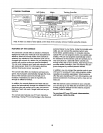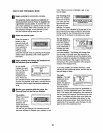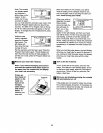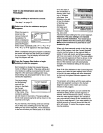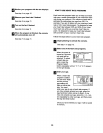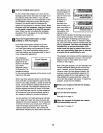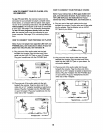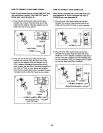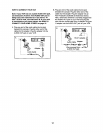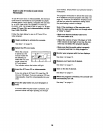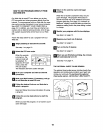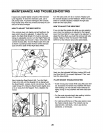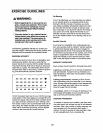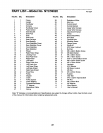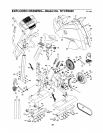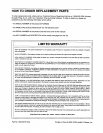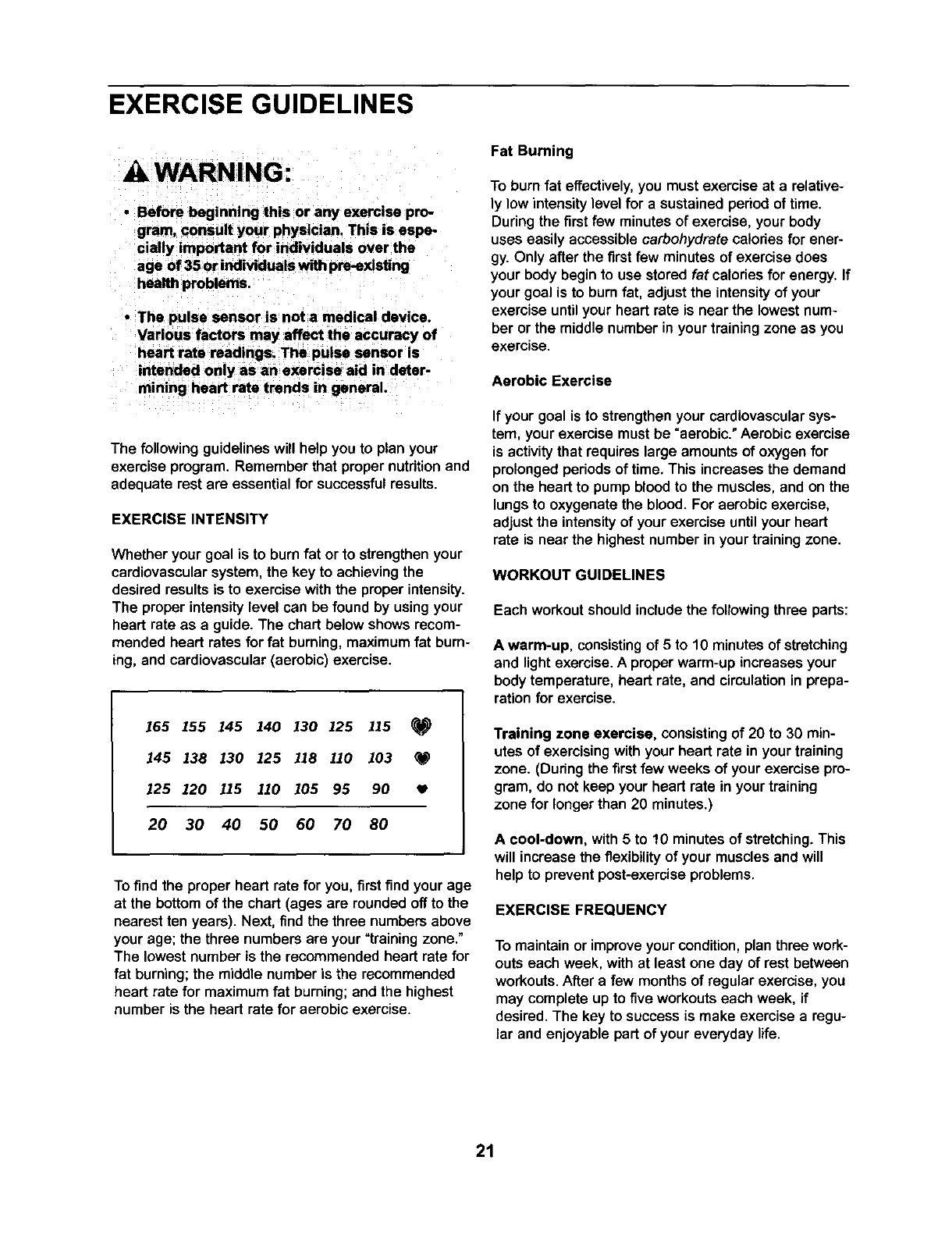
EXERCISE GUIDELINES
• Before beginning this or any exercise pro-
gram, consult your physician. This is espe-
cially important for individuals over the
age of 35 or individuals with pre-existing
health problems.
• The pulse sensor is not a medical device.
Various factors may affect the accuracy of
heart rate readings. The pulse sensor is
intended only as an exercise aid in deter-
mining heart rate trends in general.
The following guidelineswill helpyou to plan your
exercise program. Remember that proper nutrition and
adequate rest are essential for successful results.
EXERCISE INTENSITY
Whether your goal is to burn fat or to strengthenyour
cardiovascular system, the key to achieving the
desired results is to exercise with the proper intensity.
The proper intensity level can be found by using your
heart rate as a guide. The chart below shows recom-
mended heart rates for fat burning, maximum fat bum-
ing, and cardiovascular (aerobic) exercise.
165 155 145 140 130 125 115
145 138 130 125 118 110 103
125 220 115 210 105 95 90
20 30 40 50 60 70 80
Tofind the proper heart rate for you, firstfind yourage
at the bottom of the chart (ages are roundedoffto the
nearestten years). Next, findthe three numbersabove
yourage; the three numbers are your "training zone."
The lowest number isthe recommendedheart ratefor
fat burning;the middle numberis the recommended
heart rate for maximumfat burning; and the highest
number is the heart ratefor aerobic exercise.
Fat Burning
To burn fat effectively, you mustexercise at a relative-
ly low intensity level for a sustained period of time.
During the first few minutes of exercise, your body
uses easily accessible carbohydrate calones for ener-
gy. Only after the first few minutes of exercise does
your body begin to use stored fat calories for energy. If
your goal is to burn fat, adjust the intensity of your
exercise until your heart rate is near the lowest num-
ber or the middle number in your training zone as you
exercise.
Aerobic Exercise
If your goal is to strengthen your cardiovascular sys-
tem, your exercise must be =aerobic."Aerobic exercise
is activity that requires large amounts of oxygen for
prolonged periods of time. This increases the demand
on the heart to pump blood to the muscles, and on the
lungs to oxygenate the blood. For aerobic exercise,
adjust the intensity of your exercise until your heart
rate is near the highest number in your training zone.
WORKOUT GUIDELINES
Each workout should include the following three parts:
A warm-up, consisting of 5 to 10 minutes of stretching
and light exercise.A properwarm-up increases your
bodytemperature,heart rate, and circulationin prepa-
rationfor exercise.
Training zone exercise, consistingof20 to 30 min-
utes ofexercisingwith your heart rate in yourtraining
zone. (Duringthe firstfew weeks of yourexercise pro-
gram, do not keepyour heart rate in yourtraining
zone for longerthan 20 minutes.)
A cool-down, with 5 to 10 minutes of stretching.This
willincreasethe flexibilityof your musclesand will
help to preventpost-exerciseproblems.
EXERCISE FREQUENCY
To maintain or improveyourcondition, plan three work-
outs each week, with at least one day of rest between
workouts. After a few months of regular exercise, you
may complete up to five workouts each week, if
desired. The key to success is make exercise a regu-
lar and enjoyable part of your everyday life.
21



